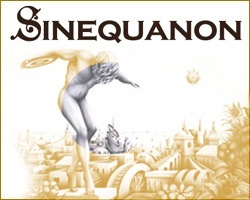Cruising on the Anawratha in Search of Lost Time

Text by Pamela McCourt Francescone
Photos by Pamela McCourt Francescone, Holger Leue and Heritage Line
A luxury cruise on the placid waters of the Irrawaddy river, on a voyage of discovery of places lost in time, smiling peoples and the amaranthine mysticism of Myanmar.
Indulging in the crystalline lines of the great Irrawaddy on the Anawratha, a modern colonial-style paddlewheel vessel, pride of the fleet of the prestigious Heritage Lines, on a voyage of discovery of hidden and unexpected facets of Myanmar: scenes of bygone days, enchanting landscapes and vistas, towns and villages where time has stood still. The Irrawaddy, Myanmar’s majestic river, also called the Elephant River and the Mother River, flows from the glaciers of the Himalayas for over two thousand kilometres to the Andaman Sea, making its meandering way down the largest country in South-east Asia.

The elegant vessel – named after the king who founded the empire of Pagan in 1044 – which is sixty-five metres long, has three decks, sixteen cabins and seven suites, was docked not far from the historic centre of Mandalay. “Impressive Gorges,” the name of the 12-day cruise that would take us through the states of Mandalay, Sagaing and Kachin, passing three gorges or defiles, upriver to Bhamo, a provincial town not far from the Chinese border.
Between Mandalay and Bhamo the river is often not more than a few metres deep, but the Anawratha kept a measured and harmonious pace thanks to its low draft and to the expertise of the captain and his crew. On board there was also a pilot who knew the great river like the palm of his hand and could spot, and even anticipate, the smallest variation in the sandbanks and the river bed caused by the weather conditions or the phases of the moon.

Our cabin was exceptionally large and comfortable – the Anawratha has the largest cabins and suites on the river – with beautiful woodwork, ethnic fabrics in jewel colours, a king-size bed, a comfortable day bed, and a modern bathroom with marble fittings and a large shower. A sliding door opened onto a verandah with armchairs made for relaxation while enjoying the scenes of everyday life playing out along the river.
The attention to detail and the respect for traditions, both in the cabins and throughout the vessel, was reflected in the heritage dial-phone beside the bed, the copper telescope, and the miniature feather duster and velvet cushion to hang outside the door for housekeeping to make up the room or to not disturb the guests. The suites are even more spacious, and the two Royal Suites have large terraces with Jacuzzis. The Spa is an oasis of tranquility and the top Sun Deck is made for total relaxation on comfortable sunbeds at the Jacuzzi pool.
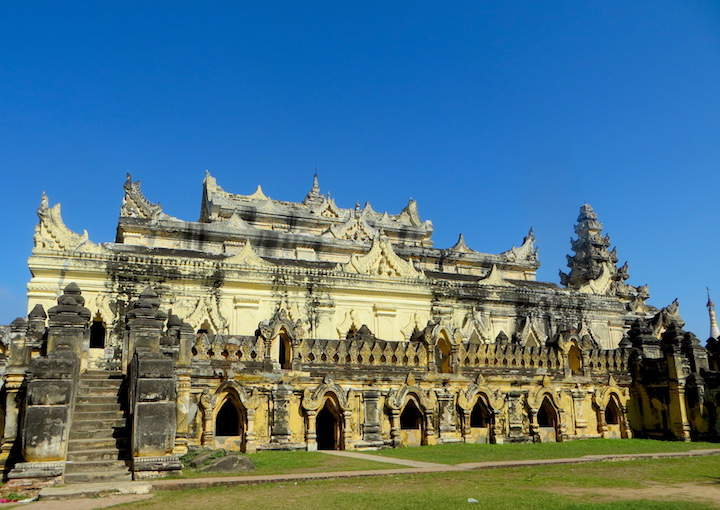
From the Kipling’s Bar to the Mandalay Lounge and the Hintha Restaurant on the Upper Deck, the handsome public areas have the sophisticated elegance of a 5-star hotel, with comfortable seating areas and refined colonial décor and furnishings. With 23 cabins, and therefore a maximum of 46 passengers ans the same number of staff, a rapport of cordiality is quickly established thanks to the genuine hospitality and warmth of the Burmese people, who make any experience in Myanmar a true privilege.
Leaving Mandalay behind and heading upriver, lunch was served in the Hinta Restaurant, a tempting buffet of local and international specialties with many salads, like the Lhapet Thoke, which is made with fermented tea leaves, alongside curries, meats and fish. After lunch the Anawratha dropped anchor at Mingun, and the guests descended to admire the world’s largest unfinished stupa. Built by King Bodawpaya in 1790, it was never completed because the court soothsayer predicted that when the last brick was set in place the king would die. The world’s largest cast iron bell stands nearly. Weighting 90 tons, it was to have crowned the stupa but sadly never rose to the heights for which it had been forged.
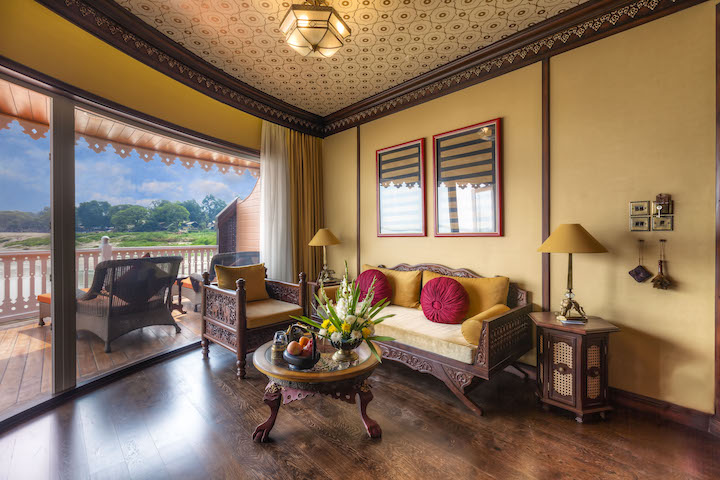
Evenings on board began in the Kipling’s Bar, enjoying the exotic cocktails prepared by the barman and chatting about the places visited during the day. Then on to dinner to delight in the creations of Chef Lin Tun served by the courteous and smiling restaurant staff. The Chef’s fantasy seemed to know no bounds, with many international favourites, but also introducing guests to new and exciting oriental flavours. After dinner in the Mandalay Lounge the two guides, Tin and Tow, presented cultural, historical and contemporary aspects of Myanmar and the staff put on traditional performances of music and dance. On other evenings films featuring Myanmar and its history were shown, and one night an illusionist put on an fantastic magic show.
In the mornings before stepping ashore or departing on the pilot boat for new adventures, breakfast was a varied selection of international and Burmese specialties like Mohinga, a catfish soup which is the Burmese national dish. Every day there were new surprises in store for the guests. In the little village of Nwe Neyin we watched skilful potters throw enormous clay pots which are used to transport liquids and have made this village famous. In Tagaung we visited the shrine of Bo Bo Gyi, a spritely and venerated spirit, and we admired the ruins of the ancient fortress.

One particularly interesting visit was to the town of Katha where we relived the story of George Orwell who wrote his famous novel “Burmese Day” here when he was stationed in Burma with the British Police. In the building that once housed the British Officers’ Club we found a class of children studying English, and in the handsome old teak house of the former British Commissioner we strolled around the small museum admiring photos and artefacts dating back to colonial days. Coming out we found the Anawratha’s crew had prepared delightful refreshments, including canapés and champagne, which were much appreciated as it was midday and it was already extremely hot.
During the hours of navigation, relaxing on the balcony of our cabin, in an armchair in the lounge or on the Sun Deck, we watched the changing scenes along the river. Life in the little villages and in the simple houses on stilts with thatched roofs was simple and in tandem with the changing seasons and the hours of the day. In the fields of rice, peanuts and sesame the farmers worked with ploughs and ox-drawn carts while fragile fishing boats and large bamboo rafts moved up and down the river at all hours. On the banks smiling women and children, for whom the great river is a theatre of labour and of amusement, waved happily, and in the towns and villages white pagodas and golden temples peeped out of the vegetation and the gentle murmur of Buddhist chants wafted across the water.

On the way back we stopped at Bhamo, the furthest north boats can navigate the mighty Irrawaddy, on the ancient Silk Road to China taken by Marco Polo in the 13th century. We walked around the lively local market where colourfully-dressed Kachin, Lisu e Shan tribes were selling fruit, vegetables and local handcrafts. On the night of the Big Moon the guests were invited to dine by candlelight on the Sun Deck where the staff had prepared a magnificent barbeque to celebrate Thadingyut, the Festival of Lights. The evening ended on a high note when the crew lit thousands of tiny flickering lanterns, made from banana leaves, that floated gently on the water, creating a magical spectacle.
One of the last stops was Innwa where we visited the Bagaya Kyaung Monastery with its handsome woodcarvings, and the Mal Nu Ok Kyaung, also known as the Brick Monastery which was built by Queen Me Nu, in 1818. In the afternoon we docked at Sagaing, Myanmar’s most venerated religious centre, and then at Amarapura to delight in the sunset at the U Bein bridge, the world’s longest teak bridge crafted using many thousands of massive tree trunks. Our splendid adventure on board the Anawratha drew to an end with two nights in Bagan, the country’s most spectacular archaeological site with over 2,200 temples dating back to between the 9th and 13th centuries.
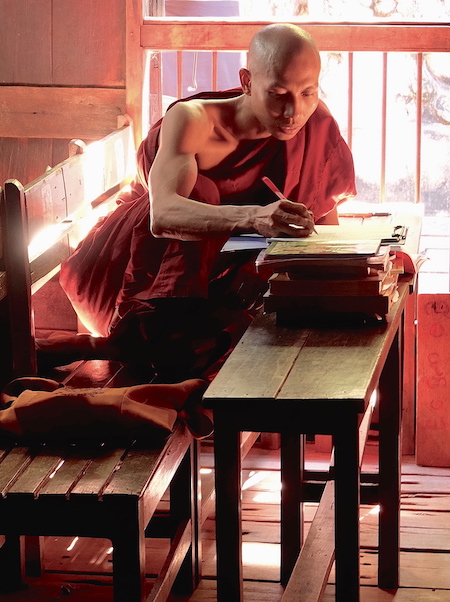
A breathtaking early-morning hot-air balloon ride brought into focus the thousands of temples, stupas and pagodas with spellbinding names like Shwezigon, Htilominlo, Schwesandaw, Dhammayangyi, Ananda and Thatbyinnyu, and the incomparable and timeless beauty of Bagan.
heritage-line.com
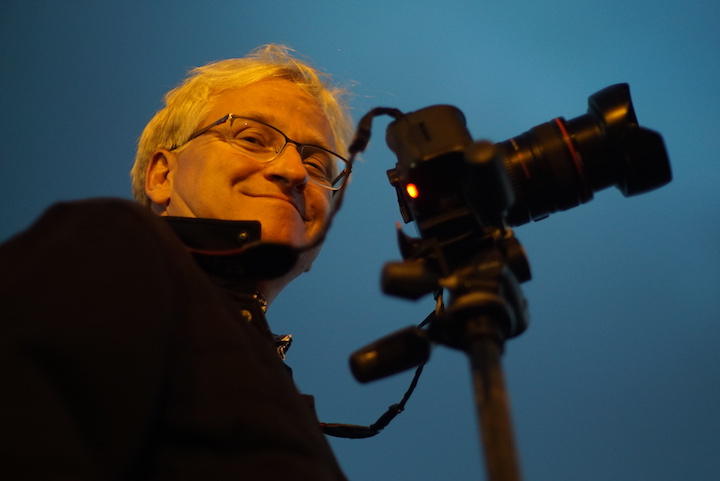
Holger Leue is regarded as one of the world’s premier travel photographers. His work has been published in more than 100 books, travel guides and calendars, as well as in countless magazine features. “The well-being that I experience on location,” he says, “is reflected in the quality of the imagery.” To date Holger Leue has completed photographic assignments in more than 100 countries. www.leue-photo.com.
[wzslider autoplay=”true” transition=”‘slide’”]

